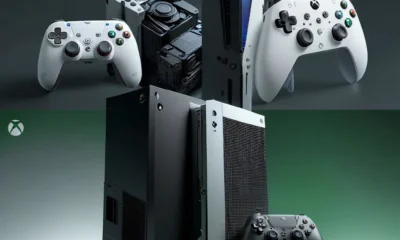Features
1996 Redux: The Sleeper Hit that is ‘Revelations: Persona’
Editor’s note: Join us over the next two weeks as we look back at the most outstanding and influential games of 1996.
While 1996 was a big year for standout titles like Crash Bandicoot, Resident Evil, and Tekken, it also ushered in a new era of JRPGs, albeit in a quiet manner. It goes without saying that the Shin Megami Tensei sub-series, Persona, has become one of the most beloved RPG series in recent memory, but it didn’t start out that way. Revelations: Persona, the first game in the series, stumbled rather than burst onto the scene in ‘96, and had several factors hindering its road to success. Despite this, Revelations went on to redefine storytelling in the RPG genre, and cement itself as one of the most important games of that year.
The success, and overall conception, of Revelations: Persona sprang from the equally well received Shin Megami Tensei If…, one of the main games in the flagship series. If, like Revelations, focused on a group of high school students who did battle with various demons in elaborate puzzles. Due to the success of the high school setting of If, much of the staff who worked on the title branched off to create Revelations. This led to an RPG that embodied the spirit of the main Shin Megami Tensei series, but also incorporated its own sense of style and story. Lead character designer Kazuma Kaneko and director Kouji Okada (who occupied the same roles for If) were heavily inspired by Jungian psychology when creating Revelations, and the game’s central idea of people having Personas that embodied their strongest emotional traits was taken straight from this ideology.
Gameplay in Revelations was seen as an inventive take on the classic Shin Megami Tensei formula. While combat was still turn-based, it centered around a grid system and multi-faceted attacks. Furthermore, the Personas that the characters collect act as an additional attack choice, rather than a party member. This spot is taken up by three other side characters that accompany the player throughout the game.
Each character has access to a Persona, and can interchange them in the middle of a battle. Players also had the chance to talk with the enemy combatants during a battle in the hopes of coming to a peaceful resolution, or even gaining a beneficial item from their opponents. While this system has been tweaked and revised in later iterations, the core concept of human party members that fight using their Personas, and conversing with the enemy, has remained constant.
Outside of combat, the player must traverse the game world in either a third or top down view of their character, depending on the environment. Moving between set locations was less detailed, while areas like the inside of a classroom or a hospital gave the player a better view of their character and the environment. The high school setting is also a mainstay of the Persona series, which is seen as one of the game’s biggest strengths.
Revelations is not without its faults, and upon first release received a fair bit of criticism. Those who reviewed it said that, while the story and music were fantastic, the localization was poor and the graphics and level layout were less than decent. On the opposite end of the spectrum, critics adored the high school setting as it offered a wellspring of emotional connections and thematic elements.
The groundwork laid with this first game in the Persona series helped the later titles anchor themselves to other high school protagonists, and gave players relatable characters with rather normal problems and obstacles that could be experienced in the real world, outside of fighting demons and summoning spirits, of course. Described by most as a “sleeper hit,” Revelations only sold a little over 200,000 copies in its debut week. A later remaster of the game for the PSP introduced a new generation of gamers to the title, and was well received across the board.
Despite having all the strengths to be recognized as a well-rounded game, Revelations was relatively glossed over in ‘96. Due to the lack of knowledge in regards to the Shin Megami Tensei series in the west, and poor localization upon the game’s release, Revelations became more of a cult classic rather than a standout release of that year. It wasn’t until the third game in the series was released for the second PlayStation that Persona got the recognition it deserved. Nonetheless, Revelations is a unique and refreshing take on the RPG genre that deserves its chance in the sun.
While 1996 was jam packed with stellar RPGs like Diablo, Wild Arms, Star Ocean, and Super Mario RPG, it was this obscure title that would sow the seeds for a genuinely compelling and emotional series that captured the hearts of hundreds of thousands of fans across the globe.

-

 Features4 weeks ago
Features4 weeks agoDon’t Watch These 5 Fantasy Anime… Unless You Want to Be Obsessed
-

 Culture4 weeks ago
Culture4 weeks agoMultiplayer Online Gaming Communities Connect Players Across International Borders
-

 Features4 weeks ago
Features4 weeks ago“Even if it’s used a little, it’s fine”: Demon Slayer Star Shrugs Off AI Threat
-

 Features2 weeks ago
Features2 weeks agoBest Cross-Platform Games for PC, PS5, Xbox, and Switch
-

 Game Reviews4 weeks ago
Game Reviews4 weeks agoHow Overcooked! 2 Made Ruining Friendships Fun
-

 Features2 weeks ago
Features2 weeks agoThe End Is Near! Demon Slayer’s Final Arc Trailer Hints at a Battle of Legends
-

 Features3 weeks ago
Features3 weeks ago8 Video Games That Gradually Get Harder
-

 Features2 days ago
Features2 days agoPopular Webtoon Wind Breaker Accused of Plagiarism, Fans Can’t Believe It!
-

 Features3 weeks ago
Features3 weeks agoDon’t Miss This: Tokyo Revengers’ ‘Three Titans’ Arc Is What Fans Have Waited For!
-

 Game Reviews2 weeks ago
Game Reviews2 weeks agoFinal Fantasy VII Rebirth Review: A Worthy Successor?
-

 Game Reviews4 weeks ago
Game Reviews4 weeks agoHow Persona 5 Royal Critiques the Cult of Success
-

 Guides3 weeks ago
Guides3 weeks agoHow to buy games on Steam without a credit card













